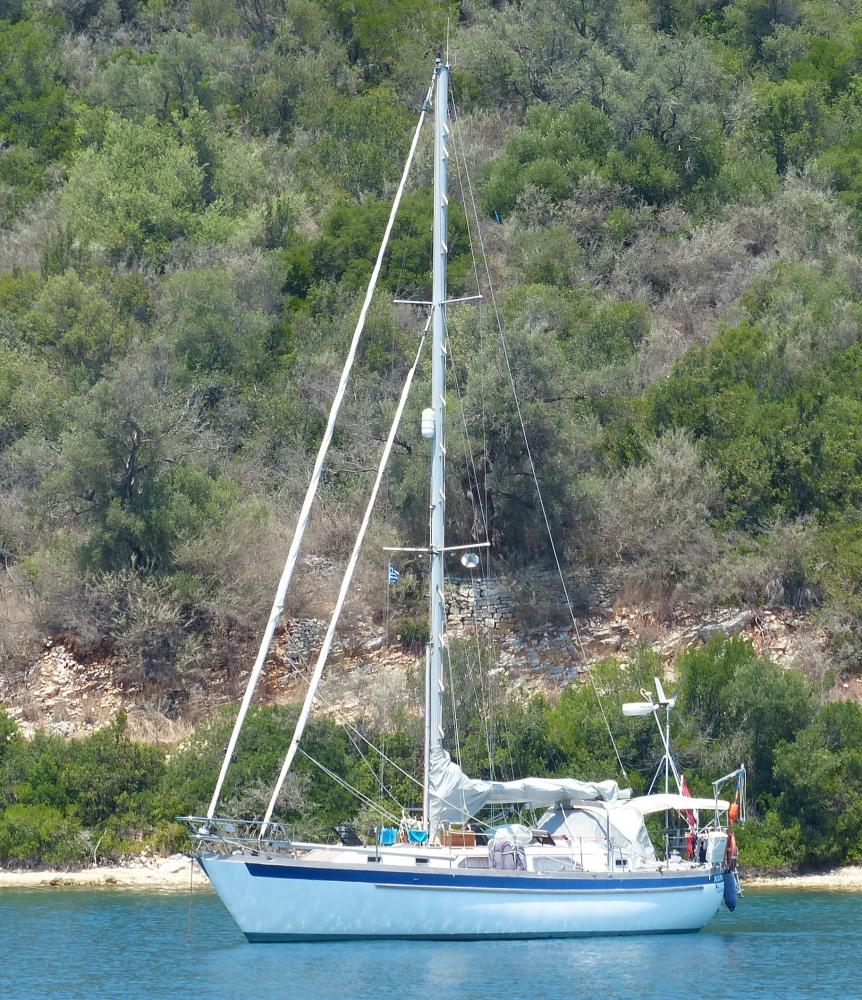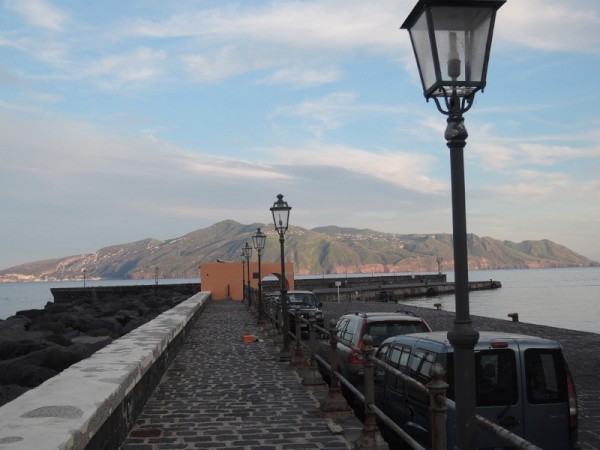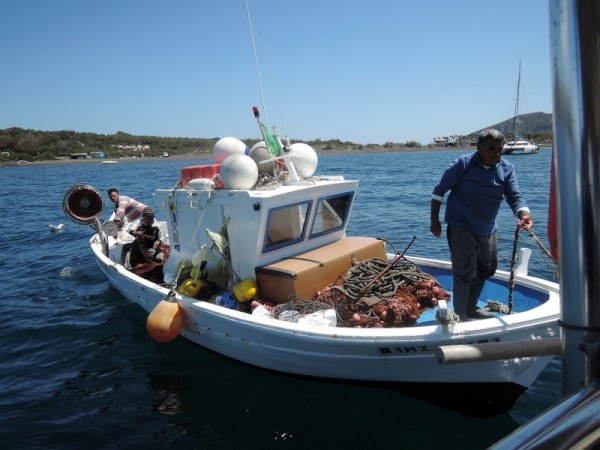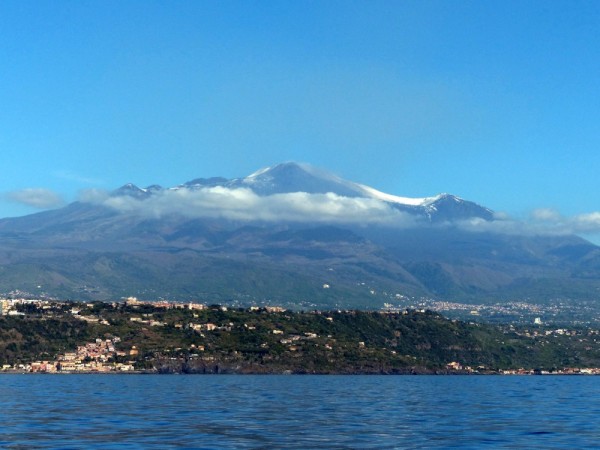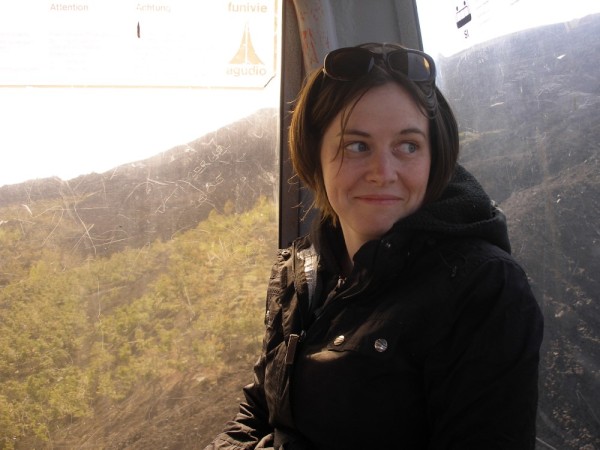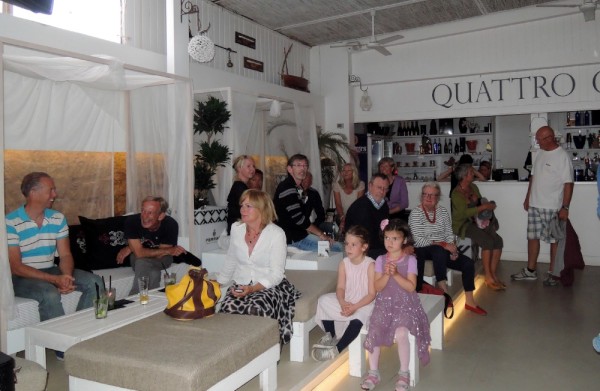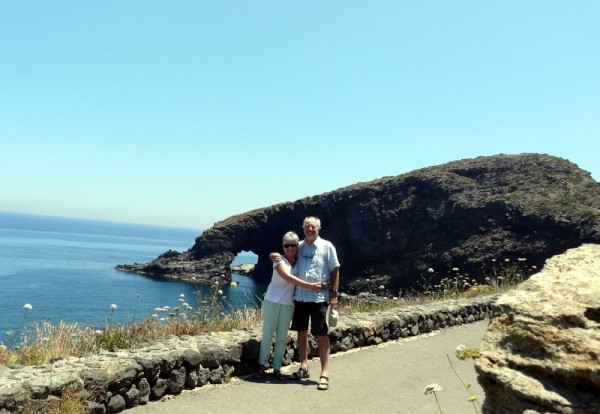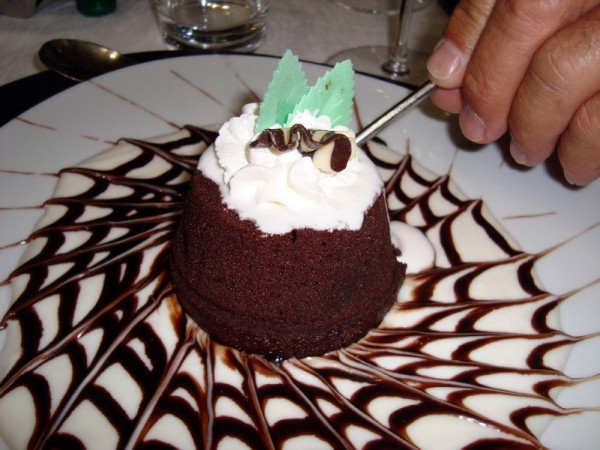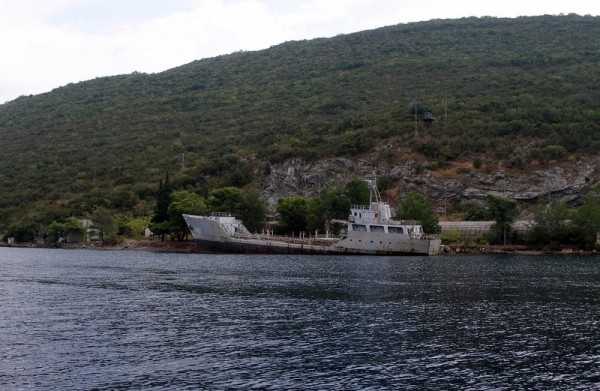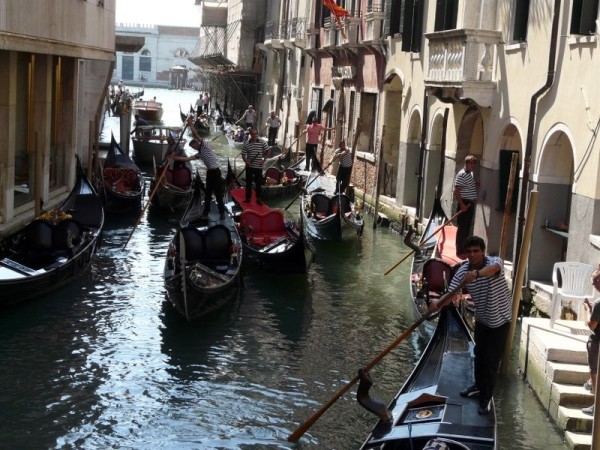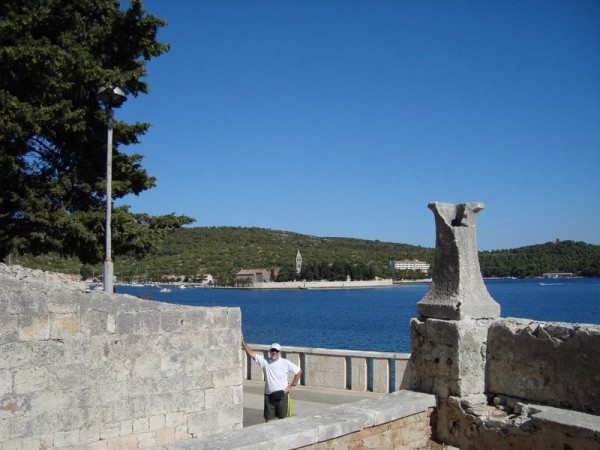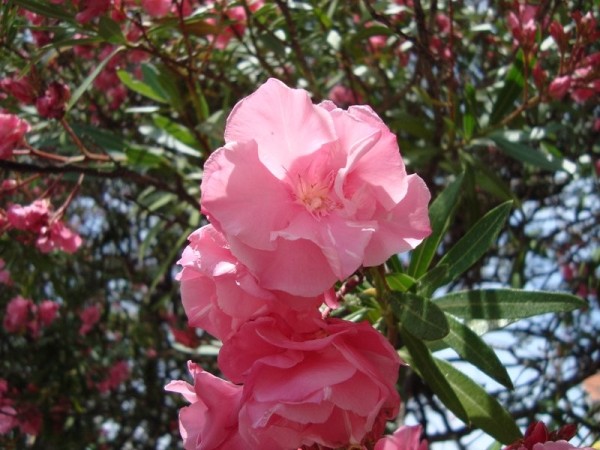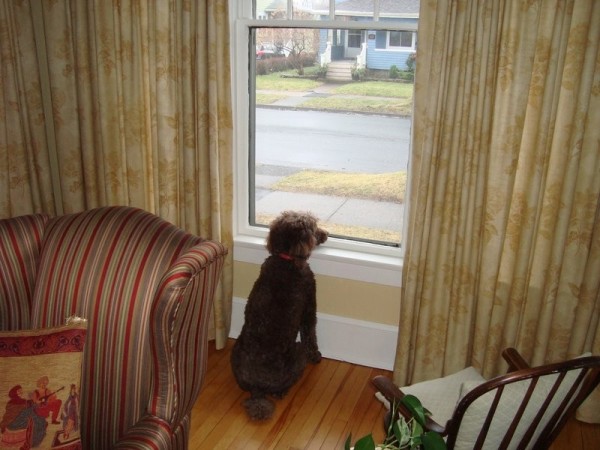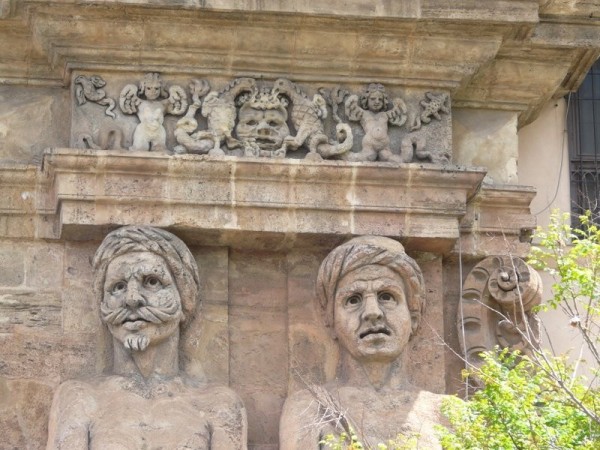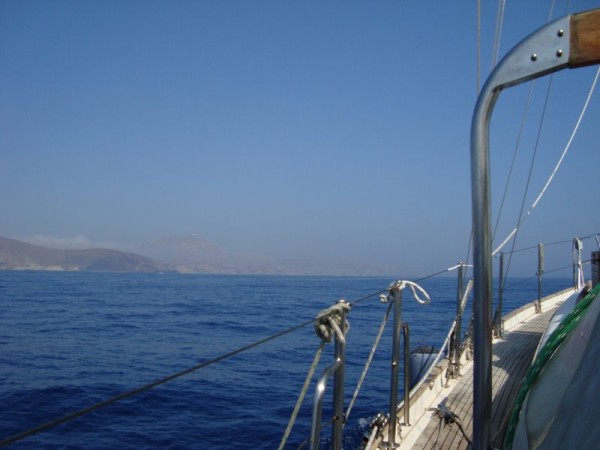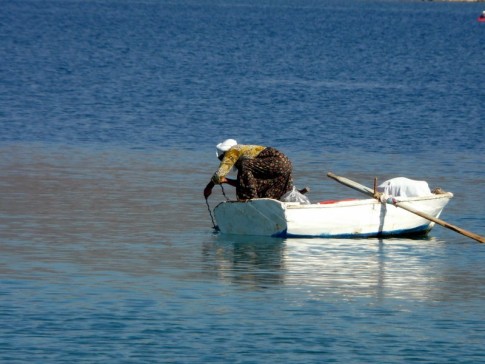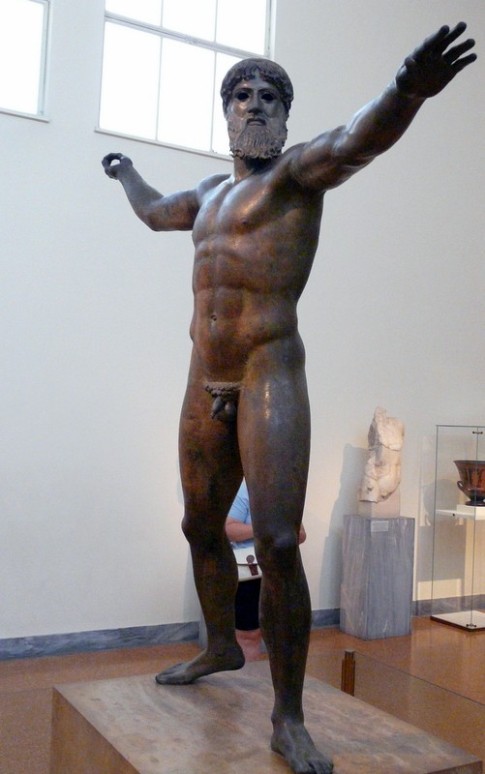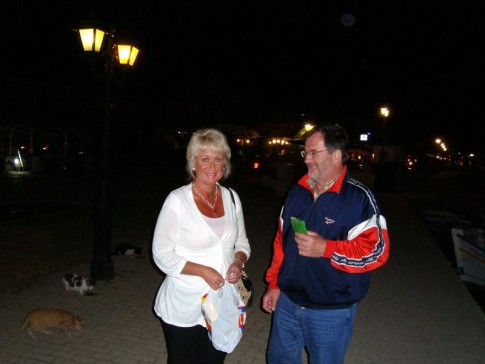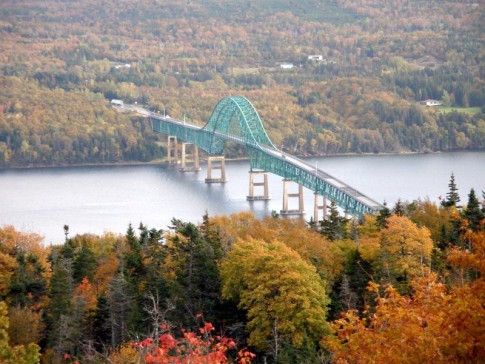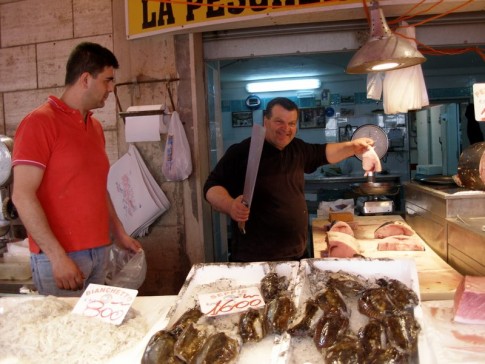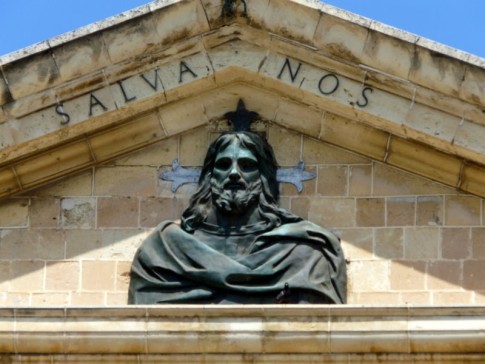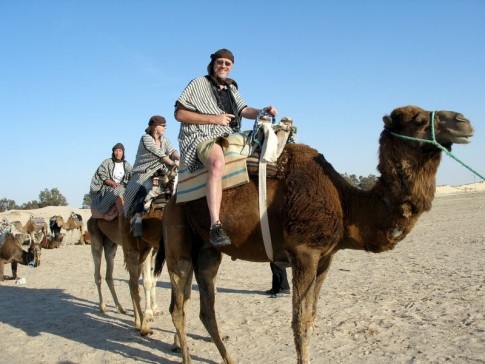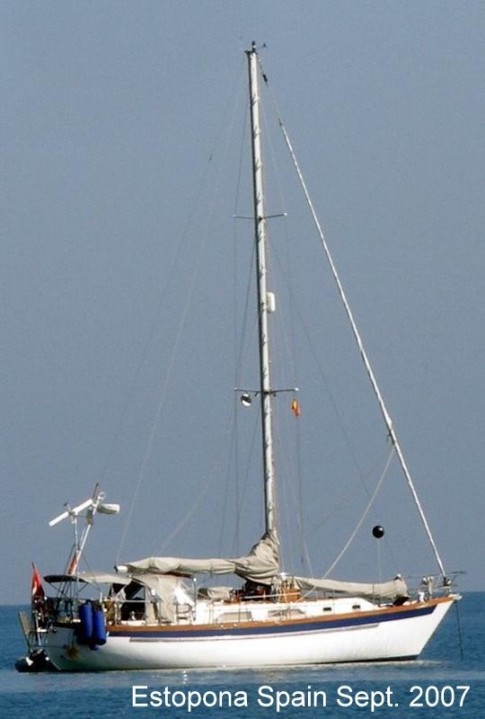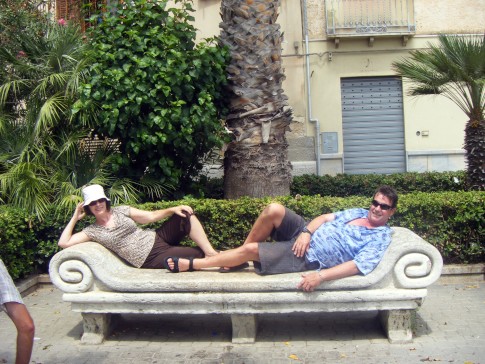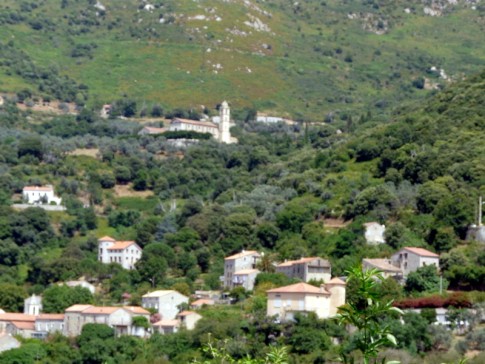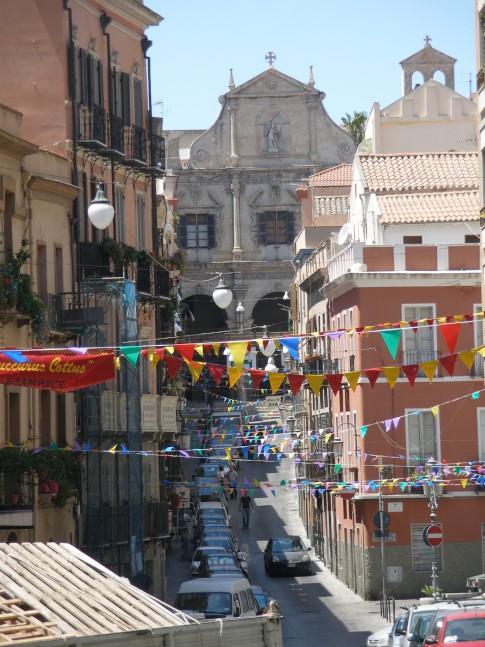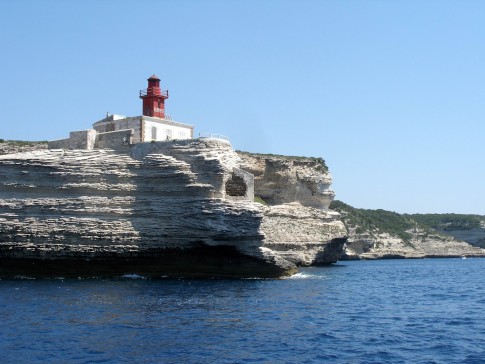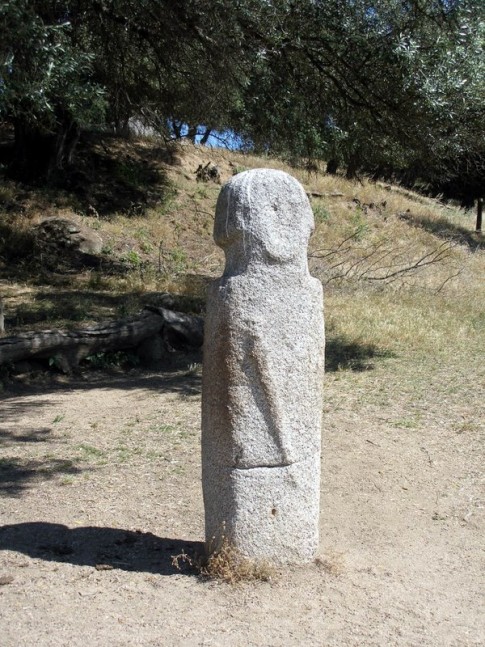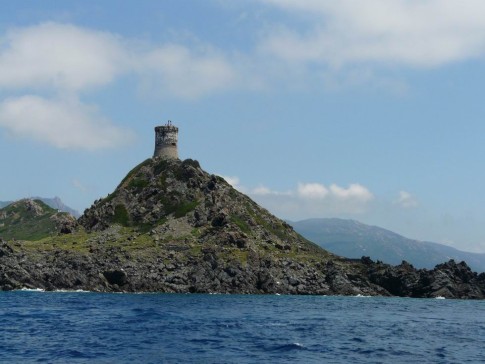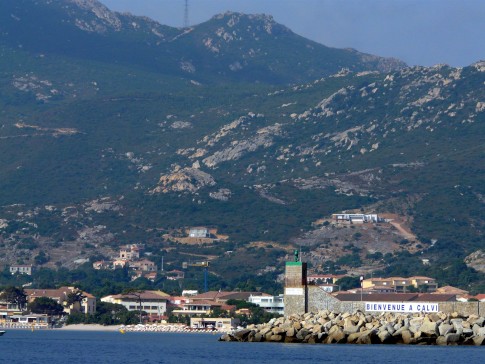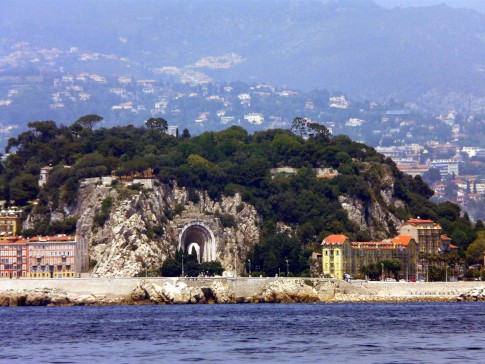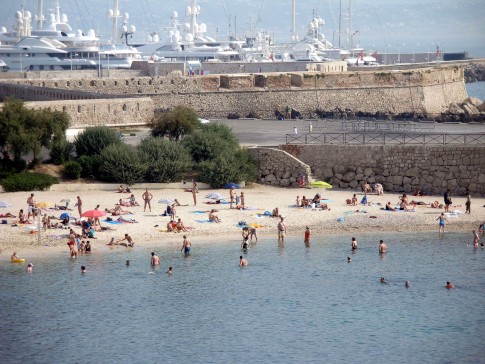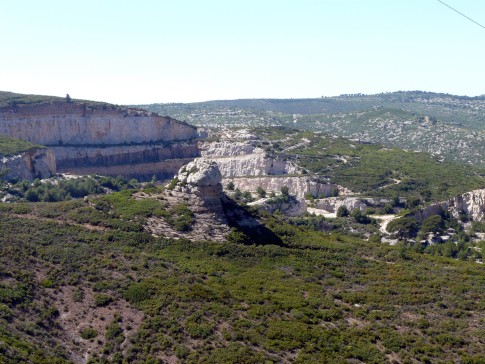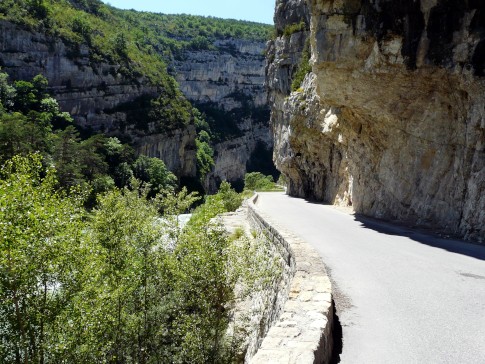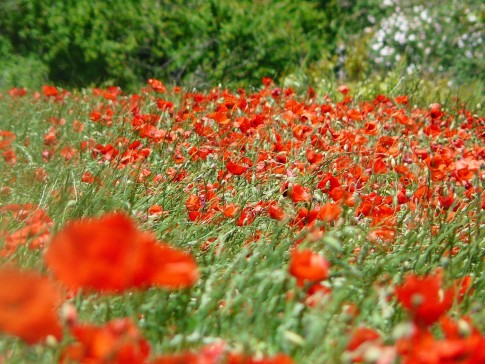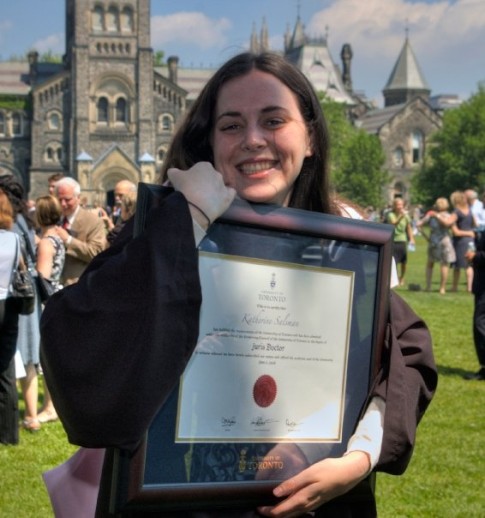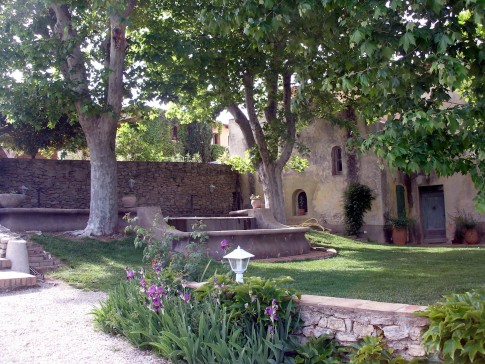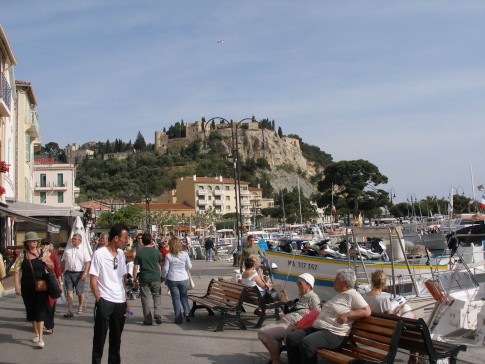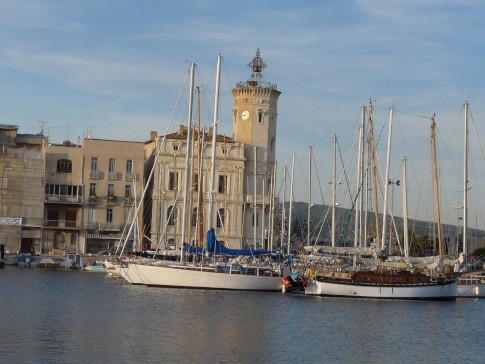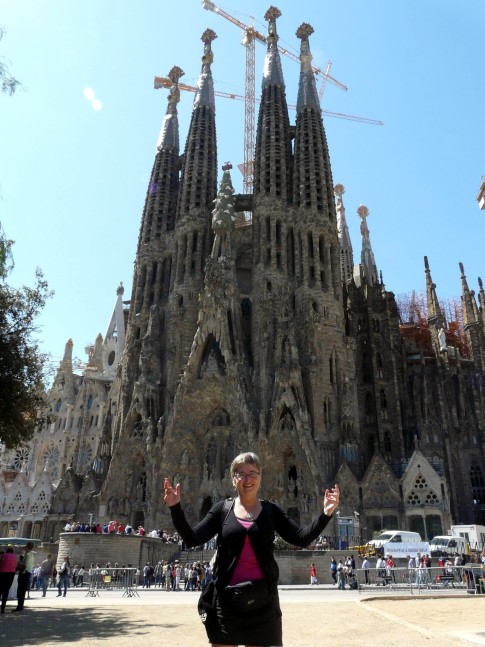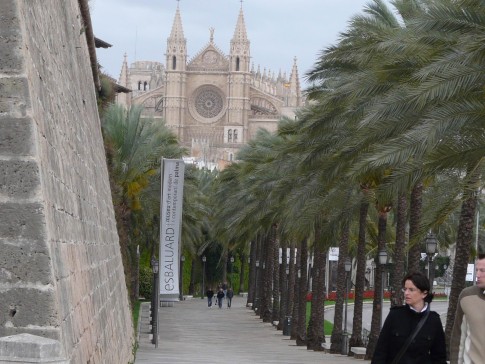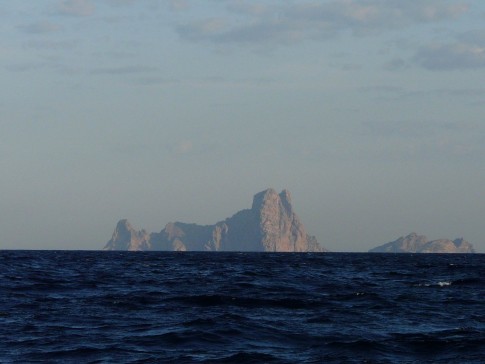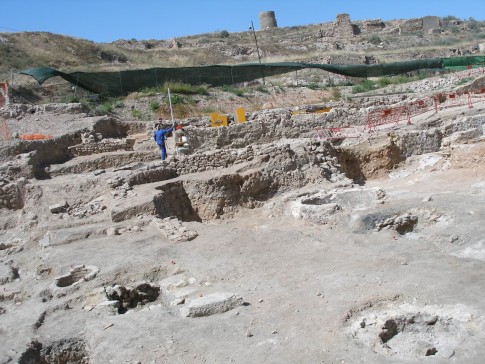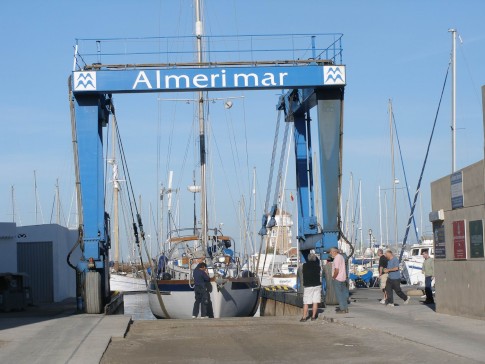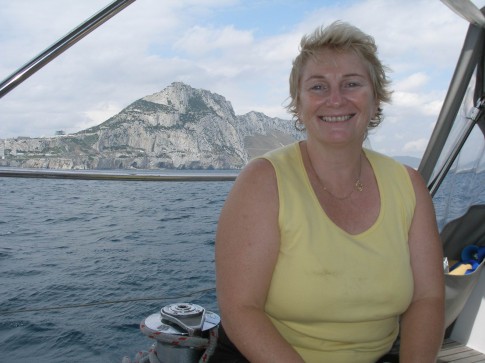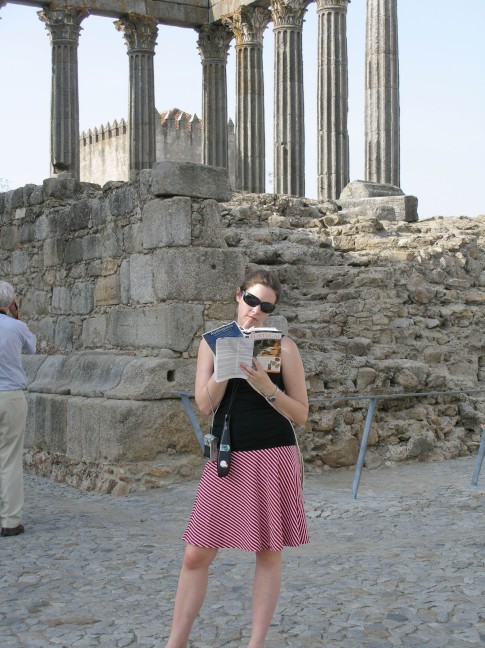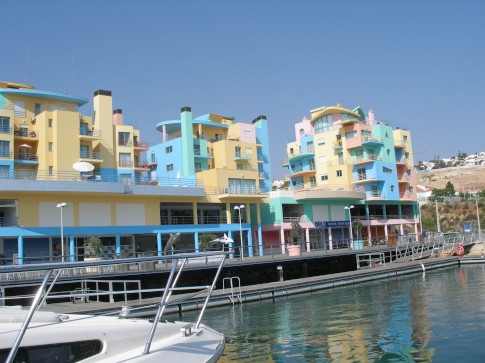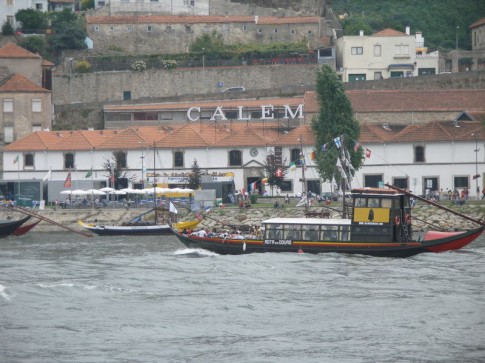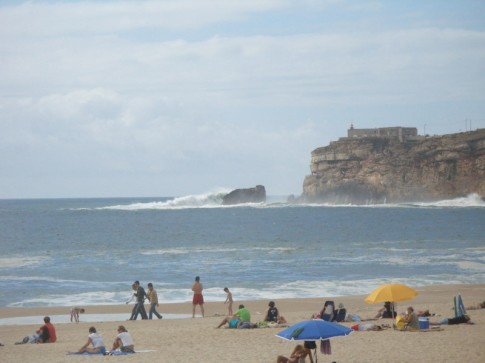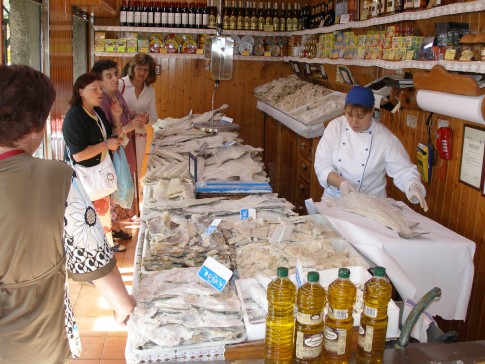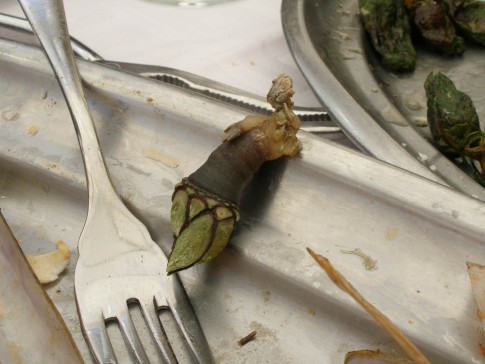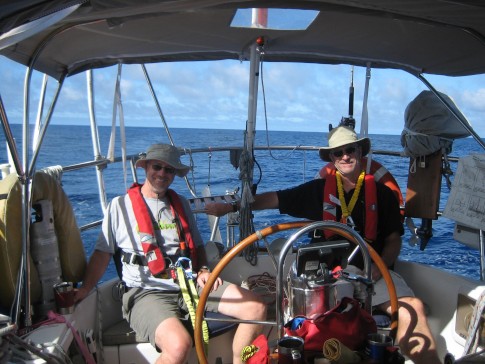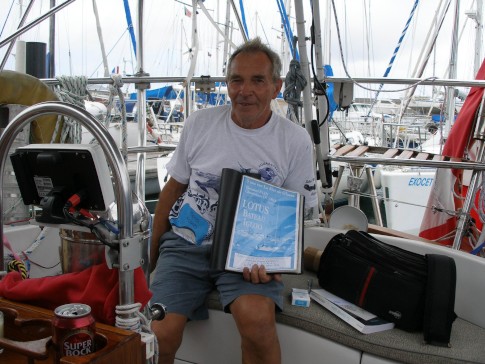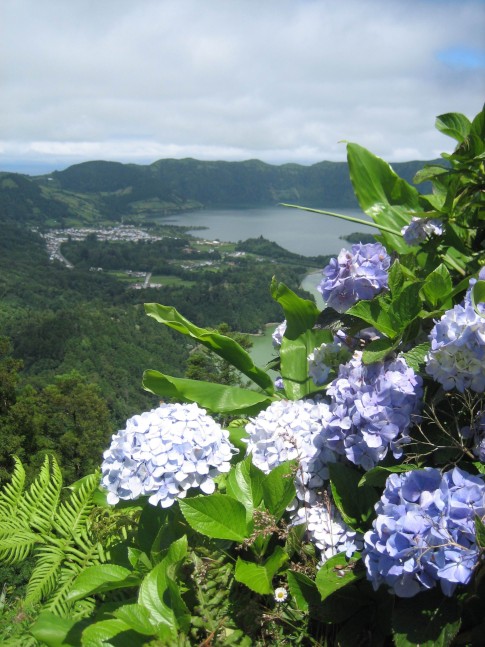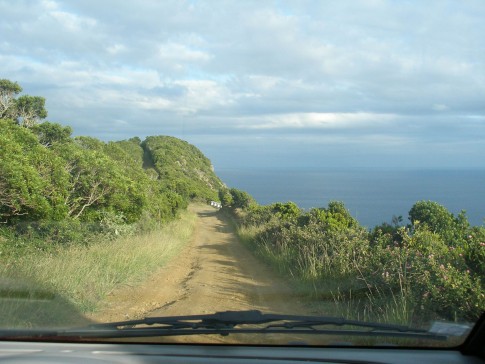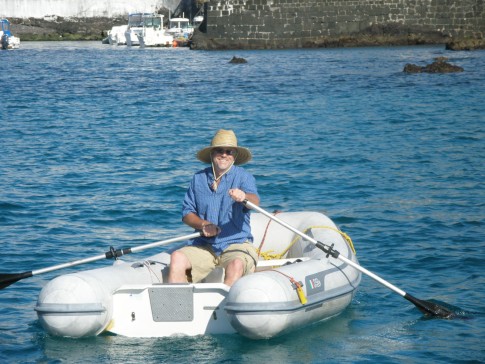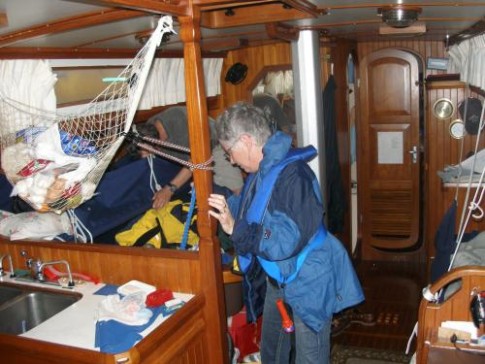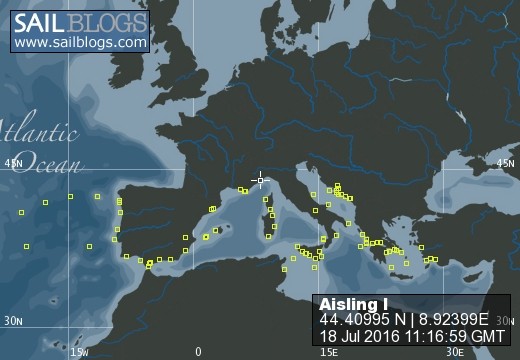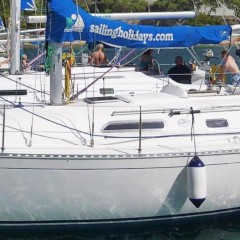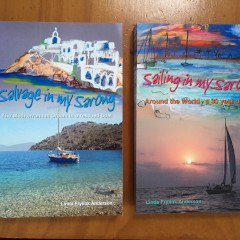
Aisling I
18 July 2016 | Genoa
11 July 2016 | Genoa Italy
04 July 2016 | Genoa
02 July 2016 | Genoa
25 June 2016 | Porto Azzurro Elba
11 April 2016 | Marina di Ragusa
21 March 2016 | Halifax
01 March 2016
14 January 2016
30 September 2015
25 September 2015 | Crotone Italy
18 September 2015 | Erikoussa
10 September 2015 | Preveza
10 September 2015 | Preveza
24 July 2015 | Preveza
20 July 2015 | Varko Bay
13 July 2015 | Vlicho Bay
09 July 2015
03 July 2015 | Preveza Greece
21 June 2015
Imagine...
30 April 2009
Bonnie and Rick
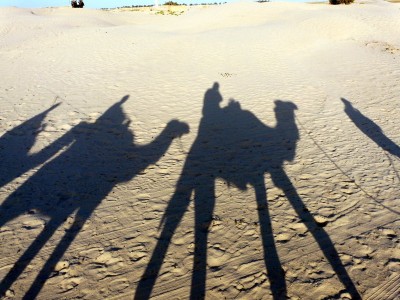
A sailboat can't take you to the Sahara desert, but it can get you close enough that 230 Tunisian dinars ($193 Can) per person will pay for a three-day trip to the desert and back, including a chauffeured four wheel drive, accommodations and all meals. At 7 a.m. on Friday morning, we meet our driver-guide Hamed and our three travelling companions Serge, Pascal and Francoise, on the street outside the marina. Pascal and Francoise had helped Serge sail his 16-meter motorsailor from their home port in southern France to Monastir, via Sardinia. After several days of sanding and varnishing teak, they are ready for a break. Some might not consider travelling 1300 km in three days to be a break, but the sights and experiences in the Sahara desert and its environs would be an unforgettable experience.
First stop, El Jem- the third largest coliseum in the Roman world, built in the third century AD and now surrounded by souvenir stalls with persistent vendors and seedy cafes where male clients pass the time smoking hookahs and drinking mint tea or coffee. We are back in the car within twenty minutes, with our sights set firmly on southern Tunisia.
Imagine...seeing the lush fields and orchards of the north gradually dwindle and disappear. Driving past buildings and bridges built by General Rommel and visiting a subterranean Berber home in Matmata, where the lifestyle has changed only marginally over the centuries. Seeing the vast Sahara that we read about as children and feeling like Lawrence of Arabia riding through the dunes on the back of a camel. Visiting the dunes at sunset and encountering a nomadic woman dragging a snarling fennec (fox) puppy on a leash. Searching for seashell fossils on desert plain, miles from the sea. Seeing the cave where Rafe Feines left his beloved in the film "The English Patient." Seeing the miracle of the miniscule desert flowers that bloom in the sand during spring. Driving for miles along a "chott" where the reflections from the salt crystals in the dry desert lake trick you into believing that you are seeing a vast sea.
Imagine...three days with hardly a word of English spoken. Hamed is a wealth of information and thankfully he speaks French slowly and clearly so that we can understand most of what he says. When we do not understand, he translates an explanation in English, which we quickly realize is more difficult to understand than the French explanation. Our French companions initially do not attempt to speak to us in English, but as the days pass we begin to communicate in a mélange of English and French and enjoy each others' company immensely.
In the interior courtyard of a subterranean "troglodyte" dwelling, two young children who have no toys innocently play with a small captured bird and we are certain that the bird will not live past sunset. Hamed invites us to turn the heavy granite stones that the mother uses to grind the flour for the family's meals and explains that this is a regular daily task rather than a demonstration. The home is clean, tidy and surprisingly bright, but it could easily serve as a movie set for a Bible story. Hamed knows the family well and tells us that the wife works endlessly, the husband not at all. This, he says, is a common state of affairs among the Berbers.
Near Douz, we have reached the edge of the Sahara. We see Bedouin tents and herds of goats, sheep and camels. We stop to collect some "Roses des Sables", the beautiful rock formations that form in the sand and look like flowers. At Douz, we are offered the option to take a ride on the back of a camel¬ - in fact an Arabian dromedary, which Hamed clearly reveres as the finest of all animals. Hamed assures us that the "dromadaire" has human-like emotions and is more reliable than any GPS for finding a waypoint. Serge and Pascal have no interest in a camel ride and since it does seem a bit touristic we almost give it a miss, but Francoise says firmly that she must go- never in her life will she have another opportunity to ride on a camel. Rick and I decide to accompany her while Serge, Pascal and Hamed wait in the café. The operators dress us in Berber-style tunics and headdresses and we are led out onto the large dune with our three camels tied in a mini-caravan. As we rock along over the dune, a man in a brilliant royal blue Berber costume gallops past on a glorious-looking horse. The fact that this has certainly been planned for the enjoyment of tourists does not detract a whit from our appreciation. Francoise cannot stop smiling and says "One forgets everything here". Rick and Francoise decide that they will have a cigarette as we ride and as she smokes, Francoise asks us what the English word for "chameau" is. "Ah", she says, "Like the cigarette. I am smoking a Camel on a camel".
When we reach our hotel in Souk Lahad near Kebili, we have been on the road for over 12 hours and have driven over 600 km. The hotel is a meandering complex with pleasant Moorish-style rooms where the beds are mattresses on raised ceramic tile platforms. At dinner, Serge (an aeronautical engineer) presents us with a physics problem- if a glass is filled to the brim with a mixture of half red wine and half water, how can the red colour be removed completely, without spilling the contents?
On Saturday, a 6 a.m. wake-up call allows us enough time to complete a six-hour itinerary before lunch. Our first stop is educational rather than picturesque- a visit to a station that pumps geothermally heated water from a depth of 1700 meters, then cools the water by allowing it to spill over a grill within a tower. This water is used to irrigate plantations and greenhouses in the desert. We drive for miles along a road that crosses the chott (a dry salt lake bed) and stop to stretch our legs. Standing at the edge of the chott, we debate whether the little buildings that we see in the distance are real, or merely a mirage. When we stand upright we can see the buildings clearly, but as we squat they gradually disappear. We ask Hamed, "Ca existe?" "Non, ca n'existe pas." (Rick still insists that "ca existe". Moi, je suis certaine que ca n'existe pas. )
We drive pass an oasis, receive considerable instruction from Hamed on how to plant and care for date palm trees and visit a botanical garden and a small zoo. We learn that lions were native to the Atlas Mountains of Tunisia and wish that the pair we see penned up in a small area were still running free.
Our program is less ambitious today. We reach Nefta in the early afternoon and make a brief stop at a viewpoint overlooking the corbeille (a deep gully /oasis filled with palm trees and a huge public swimming pool built when Habib Bourguiba spent a winter in Nefta) before checking into the Hotel Bel Horizon. We are pleased to find spacious rooms, a large swimming pool and inviting decks with views of the chott. After lunch, we retire to the bar for coffee, where Serge presents the red wine problem to Hamed and the bar tenders. As we leave the bar, they are pouring water into a wine glass and having an animated discussion in Arabic.
After a few hours of repose, we meet Hamed for a visit to the old town, where many of the women wear long tunics with a band of blue colour near the waist. In the past, the bands varied in width depending on the marital status of the woman, but this practice has been abandoned in favour of a single standard width (a fact that perhaps reflects the improved status of women in Tunisia). After a glass of mint tea, we drive into the desert to see the sunset. As we wait for the sun to drop, Hamed shows us how the desert sand always accumulates on the north side of the plant-if ever you are lost in the desert without a compass or a dromadaire, this knowledge will help you find your way home. Francoise points to the desert plants and asks "What could one eat here?" Hamed replies that nowadays, the people who live in the desert mostly go into the villages to buy food. So ends the lesson on desert survival skills.
A cloud shields our view of the sunset, so we are preparing to leave when Rick spots three people coming over the dunes in the distance. Hamed shrugs, says that they are nomads and heads for the car. Just as we are about to buckle our seatbelts, an older woman dressed in traditional garments comes running over the dune, dragging a very unhappy fennec puppy on a chain. She rushes to the car and displays her wares- small woven purses obviously made from whatever bits of cloth she could accumulate, and some small bracelets and necklaces. She gives us beseeching looks and repeats "un dinar, un dinar". I buy a small bracelet and Francoise buys a necklace and purse, but our best acquisition is the photo that Rick takes of her before we drive away.
At dinner, Hamed announces that he and the bartenders were able to solve the wineglass puzzle in less than an hour. Rick and I are still mystified. Eventually, we convince Serge to give us the solution. (You will have to wait until we get back to Halifax for the demonstration.) After dinner, we retire to the bar/"discotheque" for mint tea and some dancing. It is interesting to see how the young Tunisian men are happy to dance alone, with each other or with older women if they cannot find a suitable dance partner among the young women.
At 7 a.m. on Sunday we are already in the car for the long drive back to Monastir. The landscape changes dramatically as we approach the mountains, with sandy plains running toward craggy peaks. We make a brief stop at a deserted Berber village (one of many that were destroyed by torrential rainstorms 40 years ago) and search for fossils on a stretch of desert outside Chebika. Accompanied by a local guide, we walk around a "tourist trail" near Mides, where the views of the gorge are dramatic. Small children and young men appear around every corner, selling white rocks that crack open like eggshells to reveal sparkling crystals inside. The guide points to the film setting for "The English Patient" and leads us along a rocky path to a small waterfall. Serge makes the entire walk barefoot, much to Hamed's chagrin.
As we leave Mides, we are only eight km from the Algerian border and we pass a customs station, National Guard posts and numerous police checkpoints. We stop for coffee on the road to Gafsa and the folly of barefoot rambling becomes very clear when Hamed spots a small viper on the rocks outside the café and attacks it with a piece of palm wood. In the process, the viper makes a journey around his ankle that leaves all of us with racing pulses, but the viper is eventually trapped in an empty water bottle and left behind as a conversation-starter for the café's next visitors.
The drive to Kairouan is long and tiring even for us and Hamed must surely be exhausted. We reach Kairouan (the fourth holiest site in Islam) at 5 p.m. Non-Muslims are not permitted into the courtyard of the Great Mosque after noon (nor into the interior of the mosque at any time) but we get a good view of the courtyard and a glimpse of the interior from the roof of a nearby carpet cooperative. Kairouan would be an interesting travel destination in its own right, but today we have only a glimpse.
On the final leg to Monastir, Hamed shares some final pieces of advice for navigating through life in Tunisia- how to ensure that you receive your change from the "Taxiphones" (payphones), where to buy the best olive oil at the best price, how to avoid over-paying in taxis and various other pearls of wisdom that will prove very useful in the days to come. He becomes wistful as he talks about his life in Tunisia and his dream of owning his own house - and I realize that I will be sad to say goodbye. In three days, he has given us a glimpse at the history and culture of his fascinating country. As often happens when traveling, it is unlikely that our paths will cross again. Fortunately, we do not yet have to say goodbye to Serge, Pascale and Francoise, as their boat is tied just steps away from ours at the marina.
Our brief glimpse of the desert leaves us thirsty for more. We will see what the next few days bring, after the boat jobs are completed. As always on this adventure, we ask ourselves whether we should stay and see even more or move on. We can be sure there are more wonders to explore in Malta, Syracusa and points further east.
Ma' as-salaamah et à bientôt.....
First stop, El Jem- the third largest coliseum in the Roman world, built in the third century AD and now surrounded by souvenir stalls with persistent vendors and seedy cafes where male clients pass the time smoking hookahs and drinking mint tea or coffee. We are back in the car within twenty minutes, with our sights set firmly on southern Tunisia.
Imagine...seeing the lush fields and orchards of the north gradually dwindle and disappear. Driving past buildings and bridges built by General Rommel and visiting a subterranean Berber home in Matmata, where the lifestyle has changed only marginally over the centuries. Seeing the vast Sahara that we read about as children and feeling like Lawrence of Arabia riding through the dunes on the back of a camel. Visiting the dunes at sunset and encountering a nomadic woman dragging a snarling fennec (fox) puppy on a leash. Searching for seashell fossils on desert plain, miles from the sea. Seeing the cave where Rafe Feines left his beloved in the film "The English Patient." Seeing the miracle of the miniscule desert flowers that bloom in the sand during spring. Driving for miles along a "chott" where the reflections from the salt crystals in the dry desert lake trick you into believing that you are seeing a vast sea.
Imagine...three days with hardly a word of English spoken. Hamed is a wealth of information and thankfully he speaks French slowly and clearly so that we can understand most of what he says. When we do not understand, he translates an explanation in English, which we quickly realize is more difficult to understand than the French explanation. Our French companions initially do not attempt to speak to us in English, but as the days pass we begin to communicate in a mélange of English and French and enjoy each others' company immensely.
In the interior courtyard of a subterranean "troglodyte" dwelling, two young children who have no toys innocently play with a small captured bird and we are certain that the bird will not live past sunset. Hamed invites us to turn the heavy granite stones that the mother uses to grind the flour for the family's meals and explains that this is a regular daily task rather than a demonstration. The home is clean, tidy and surprisingly bright, but it could easily serve as a movie set for a Bible story. Hamed knows the family well and tells us that the wife works endlessly, the husband not at all. This, he says, is a common state of affairs among the Berbers.
Near Douz, we have reached the edge of the Sahara. We see Bedouin tents and herds of goats, sheep and camels. We stop to collect some "Roses des Sables", the beautiful rock formations that form in the sand and look like flowers. At Douz, we are offered the option to take a ride on the back of a camel¬ - in fact an Arabian dromedary, which Hamed clearly reveres as the finest of all animals. Hamed assures us that the "dromadaire" has human-like emotions and is more reliable than any GPS for finding a waypoint. Serge and Pascal have no interest in a camel ride and since it does seem a bit touristic we almost give it a miss, but Francoise says firmly that she must go- never in her life will she have another opportunity to ride on a camel. Rick and I decide to accompany her while Serge, Pascal and Hamed wait in the café. The operators dress us in Berber-style tunics and headdresses and we are led out onto the large dune with our three camels tied in a mini-caravan. As we rock along over the dune, a man in a brilliant royal blue Berber costume gallops past on a glorious-looking horse. The fact that this has certainly been planned for the enjoyment of tourists does not detract a whit from our appreciation. Francoise cannot stop smiling and says "One forgets everything here". Rick and Francoise decide that they will have a cigarette as we ride and as she smokes, Francoise asks us what the English word for "chameau" is. "Ah", she says, "Like the cigarette. I am smoking a Camel on a camel".
When we reach our hotel in Souk Lahad near Kebili, we have been on the road for over 12 hours and have driven over 600 km. The hotel is a meandering complex with pleasant Moorish-style rooms where the beds are mattresses on raised ceramic tile platforms. At dinner, Serge (an aeronautical engineer) presents us with a physics problem- if a glass is filled to the brim with a mixture of half red wine and half water, how can the red colour be removed completely, without spilling the contents?
On Saturday, a 6 a.m. wake-up call allows us enough time to complete a six-hour itinerary before lunch. Our first stop is educational rather than picturesque- a visit to a station that pumps geothermally heated water from a depth of 1700 meters, then cools the water by allowing it to spill over a grill within a tower. This water is used to irrigate plantations and greenhouses in the desert. We drive for miles along a road that crosses the chott (a dry salt lake bed) and stop to stretch our legs. Standing at the edge of the chott, we debate whether the little buildings that we see in the distance are real, or merely a mirage. When we stand upright we can see the buildings clearly, but as we squat they gradually disappear. We ask Hamed, "Ca existe?" "Non, ca n'existe pas." (Rick still insists that "ca existe". Moi, je suis certaine que ca n'existe pas. )
We drive pass an oasis, receive considerable instruction from Hamed on how to plant and care for date palm trees and visit a botanical garden and a small zoo. We learn that lions were native to the Atlas Mountains of Tunisia and wish that the pair we see penned up in a small area were still running free.
Our program is less ambitious today. We reach Nefta in the early afternoon and make a brief stop at a viewpoint overlooking the corbeille (a deep gully /oasis filled with palm trees and a huge public swimming pool built when Habib Bourguiba spent a winter in Nefta) before checking into the Hotel Bel Horizon. We are pleased to find spacious rooms, a large swimming pool and inviting decks with views of the chott. After lunch, we retire to the bar for coffee, where Serge presents the red wine problem to Hamed and the bar tenders. As we leave the bar, they are pouring water into a wine glass and having an animated discussion in Arabic.
After a few hours of repose, we meet Hamed for a visit to the old town, where many of the women wear long tunics with a band of blue colour near the waist. In the past, the bands varied in width depending on the marital status of the woman, but this practice has been abandoned in favour of a single standard width (a fact that perhaps reflects the improved status of women in Tunisia). After a glass of mint tea, we drive into the desert to see the sunset. As we wait for the sun to drop, Hamed shows us how the desert sand always accumulates on the north side of the plant-if ever you are lost in the desert without a compass or a dromadaire, this knowledge will help you find your way home. Francoise points to the desert plants and asks "What could one eat here?" Hamed replies that nowadays, the people who live in the desert mostly go into the villages to buy food. So ends the lesson on desert survival skills.
A cloud shields our view of the sunset, so we are preparing to leave when Rick spots three people coming over the dunes in the distance. Hamed shrugs, says that they are nomads and heads for the car. Just as we are about to buckle our seatbelts, an older woman dressed in traditional garments comes running over the dune, dragging a very unhappy fennec puppy on a chain. She rushes to the car and displays her wares- small woven purses obviously made from whatever bits of cloth she could accumulate, and some small bracelets and necklaces. She gives us beseeching looks and repeats "un dinar, un dinar". I buy a small bracelet and Francoise buys a necklace and purse, but our best acquisition is the photo that Rick takes of her before we drive away.
At dinner, Hamed announces that he and the bartenders were able to solve the wineglass puzzle in less than an hour. Rick and I are still mystified. Eventually, we convince Serge to give us the solution. (You will have to wait until we get back to Halifax for the demonstration.) After dinner, we retire to the bar/"discotheque" for mint tea and some dancing. It is interesting to see how the young Tunisian men are happy to dance alone, with each other or with older women if they cannot find a suitable dance partner among the young women.
At 7 a.m. on Sunday we are already in the car for the long drive back to Monastir. The landscape changes dramatically as we approach the mountains, with sandy plains running toward craggy peaks. We make a brief stop at a deserted Berber village (one of many that were destroyed by torrential rainstorms 40 years ago) and search for fossils on a stretch of desert outside Chebika. Accompanied by a local guide, we walk around a "tourist trail" near Mides, where the views of the gorge are dramatic. Small children and young men appear around every corner, selling white rocks that crack open like eggshells to reveal sparkling crystals inside. The guide points to the film setting for "The English Patient" and leads us along a rocky path to a small waterfall. Serge makes the entire walk barefoot, much to Hamed's chagrin.
As we leave Mides, we are only eight km from the Algerian border and we pass a customs station, National Guard posts and numerous police checkpoints. We stop for coffee on the road to Gafsa and the folly of barefoot rambling becomes very clear when Hamed spots a small viper on the rocks outside the café and attacks it with a piece of palm wood. In the process, the viper makes a journey around his ankle that leaves all of us with racing pulses, but the viper is eventually trapped in an empty water bottle and left behind as a conversation-starter for the café's next visitors.
The drive to Kairouan is long and tiring even for us and Hamed must surely be exhausted. We reach Kairouan (the fourth holiest site in Islam) at 5 p.m. Non-Muslims are not permitted into the courtyard of the Great Mosque after noon (nor into the interior of the mosque at any time) but we get a good view of the courtyard and a glimpse of the interior from the roof of a nearby carpet cooperative. Kairouan would be an interesting travel destination in its own right, but today we have only a glimpse.
On the final leg to Monastir, Hamed shares some final pieces of advice for navigating through life in Tunisia- how to ensure that you receive your change from the "Taxiphones" (payphones), where to buy the best olive oil at the best price, how to avoid over-paying in taxis and various other pearls of wisdom that will prove very useful in the days to come. He becomes wistful as he talks about his life in Tunisia and his dream of owning his own house - and I realize that I will be sad to say goodbye. In three days, he has given us a glimpse at the history and culture of his fascinating country. As often happens when traveling, it is unlikely that our paths will cross again. Fortunately, we do not yet have to say goodbye to Serge, Pascale and Francoise, as their boat is tied just steps away from ours at the marina.
Our brief glimpse of the desert leaves us thirsty for more. We will see what the next few days bring, after the boat jobs are completed. As always on this adventure, we ask ourselves whether we should stay and see even more or move on. We can be sure there are more wonders to explore in Malta, Syracusa and points further east.
Ma' as-salaamah et à bientôt.....
Comments
| Vessel Name: | Aisling I |
| Vessel Make/Model: | Slocum 43 |
| Hailing Port: | Halifax, NS, Canada |
| Crew: | Rick and Bonnie Salsman |
| About: | |
| Extra: | |
| Social: |
Aisling I's Photos - Aisling I (Main)
About Aisling 1
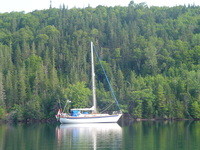
Who: Rick and Bonnie Salsman
Port: Halifax, NS, Canada
Quick Links
- Miscellaneous
- Greece-other
- Croatia and Montenegro 2012
- Sicily 2011-2014
- Italy (Mainland) 2012
- Weather and Technical
- Turkey
- Greece-Aegean
- Syracuse 2009
- Tunisia
- Malta
- Greece Ionian & Gulf of Corinth
- Sicily 2008
- Corsica and Sardinia
- Southern France
- Transatlantic part 2-Azores to Baiona
- Azores 2007
- South Spain & Balearics-2008
- South Spain & Gibraltar 2007
- Portugal 2007
- Atlantic Spain
- Transatlantic part 1-Halifax to Azores
- Previous Trips
- pre departure
- Show All Posts








